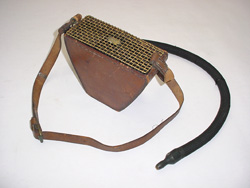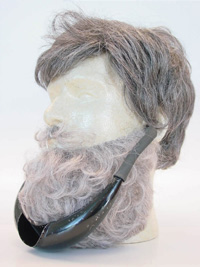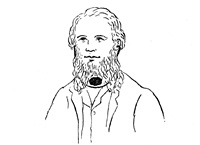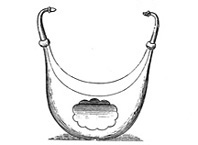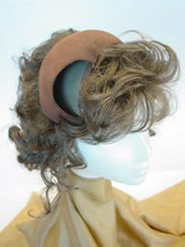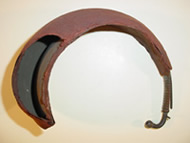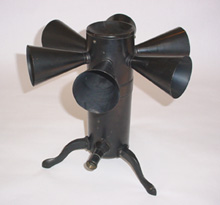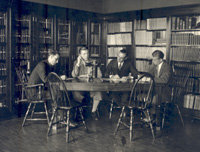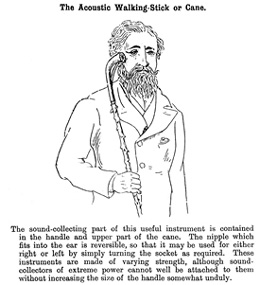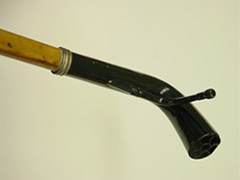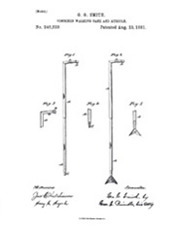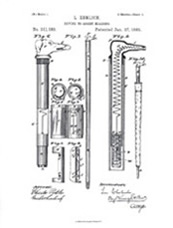Concealed Hearing Devices of the 19th Century
“The deaf are, as a general rule, very sensitive over their infirmity, and hence dislike any instrument which is conspicuous, or makes this condition more apparent; for this reason many other devices have been invented, which seek to conceal this fact, as much as possible . . .”
— James A. Campbell, M.D., 1882
Other unusual hearing aid devices designed to help the deaf appeared during the 19th century. The table vase, beard receptacle, water canteen receptor, and acoustic cane were among such devices. Other devices do not readily fit a particular category, but they all have one thing in common – they were designed to disguise the intended function.
| Water Canteen Receptor | |
|---|---|
| According to Dr. Goldstein in his 1933 book, Problems of the Deaf, this unusual device was called a water canteen receptor. Dr. Goldstein writes that this device was custom-made around 1875 by Thomas Hawksley for a deafened African rubber planter who desired a portable, yet camouflaged, hearing device that could be used while on horseback supervising the workers on his plantation. The device, disguised as a water canteen, was intended to be worn on the body with a shoulder strap for support. The sound was collected at the open grillwork and conveyed through a single rubber tube held by the user to his ear. In the Hawksley Catalogue, a variation of this device was known as the Staniland model and was used primarily as a tabletop device. There is no mention in the catalog of the origin of the Staniland model, and we have discovered no documents to confirm Dr. Goldstein’s legend. Can you imagine using this while on horseback, holding the tube to your ear and the reins of the horse at the same time? View a frequency gain chart for the Canteen Receptor |
|
|
| Vase Receptacle |
|---|
| This exquisite flower vase receptacle, made by F. C. Rein about 1810, was one of the earliest types of multiple-sound receptors manufactured. Notice the ornate gold grillwork covering each of the six openings, or “receptors,” which act as sound collectors. The white and gold paint is still evident after nearly 200 years. The center of the device is hollow to allow for flowers or fruit to be arranged within. |
 |
| F. C. Rein Vase Receptacle |
|---|
The photograph above shows the Rein vase receptacle in use. |
“The ingenuity and taste of the instrument maker are required to construct mechanical aids to hearing which shall combine gracefulness of form and appearance without detracting from their efficiency, for the burden of deafness is great and the sensitiveness of the sufferers should not be wounded by the necessity of announcing their affliction to the public by having to use instruments either unsightly in form or objectionable in color or material.”
— Hawksley Catalogue of Otacoustical Instruments to Aid the Deaf, 1883
Continued
<< Previous | 1 | 2 | 3 | 4 | Next >>

